How to Build a Budget Racecar
In July of ‘21, I decided I would get into racing.
The Video
I’ve since posted a YouTube video about this build. If you’d rather watch than read, check it out:
I put this post together to prove that it’s possible to build a track-ready race car for a reasonable budget.
As a matter of politeness, I won’t share numbers. A reasonable budget is unique to everyone–you can figure out yours on your own.

On track at Driveway Austin.
Want to skip to the build?
The Background
I hadn’t been a racing fan very long. In ‘18 or ‘19, my family began watching the Formula 1 series on Netflix and began causally watching the ongoing season. I followed tangentially but my interest didn’t really peak until the pandemic. At that point (in desperate need of activities) I built a racing rig, started following the Formula 1 season more closely, and eventually joined a karting league at Circuit of the Americas. My interest was piqued.
My GoPro footage of the 2021 COTA Karting Summer League.
I met some folks in the karting league who had done track days at Circuit of the Americas et al, and one karting season later I was convinced that I needed to get in to that world myself.
I would have to start with a car. I set a strict budget and began my search.
The Car
My criteria:
- Inexpensive to purchase and maintain.
- Rear-wheel drive.
- Reliable.
- Cheap consumables (tires, break pads, etc).
- Manual, or at least automatic with paddle-shifters.
The answer was a roadster, more specifically the very cheapest of all, the hated* 3rd generation Miata. I began my search.
*Why hated? It’s butt-ugly and it body-rolls like a boat. More on that to come. But, the hatred makes it a very affordable option.
Near the end of the month, I found my answer. A 2006 Mazda MX-5 Miata in Bryan, Texas. The car’s latest owner purchased it for his daughter but she didn’t want it**, so it sat in the garage, the soft top a resting place for the family cat.
**I didn’t ask.
The car was in great mechanical condition. It had only 36 or 37 thousand miles on the odometer, a leisurely weekend roadster. An automatic with paddle-shifters. The outside was a bit beat up: a large dent ran down the passenger side door culminating in a big paint chip, the headlights were opaque yellow, the horn didn’t work, the badges were missing, and the side mirrors didn’t match. I learned the car had a rebuilt-salvage title–as it was explained to me, the car was totaled in a spin leaving the dealer’s lot in Las Vegas. The body was pretty damaged, but structurally the car was in fine shape. It was purchased, the body repaired, and repainted. As far as I could tell, the story was true. The car drove great and looked mechanically sound. After a few weeks of negotiation, I arrived on August 1st to pick it up.
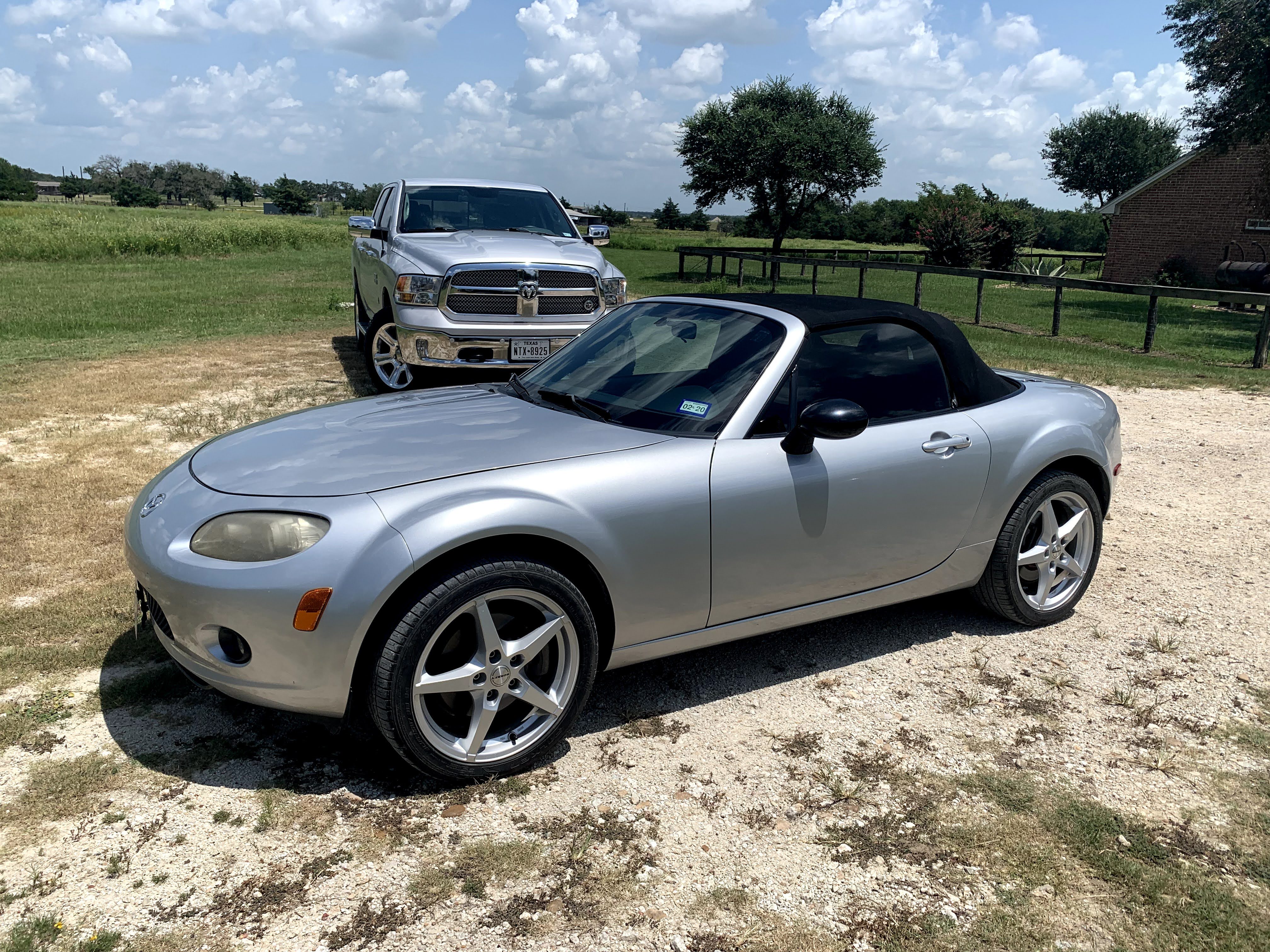
The Miata on pickup day.
The Clean Up
Not fully aware of the car’s maintenance history, I began with some regular maintenance tasks to being the car up to baseline:
- I changed the oil and oil filter.
- I had the dent repaired by a local PDR service.
- I replaced the engine air filter with a K&N filter.
- I replaced the coolant expansion tank, as the stock tank degrades and tends to fail after around 10 years of use.
- I replaced the missing Mazda badge and Miata badge–I know it’s not period correct; I don’t care. I think this one looks cooler.
- I had the car detailed and the headlights restored.
- I added a dash cam.
- I added some floor mats.
- I replaced the unmatched mirror.
- I replaced the horn.
- I replaced the dead battery in the car key.
- I fixed the paint chips and scratches with a touch up pen and a scratch repair kit.
FYI: If you buy something through an Amazon link, I may earn a commission.
The First Run
At this point, the car was at a good baseline, so it was time to go to class. I enrolled in Foundations of Road Racing at (the now closed) Driveway Austin, and had my first track experience.
I learned a ton and also quickly learned the limitations of the car. The body roll was bad and the all-season tires had no grip. It was time to move beyond regular maintenance.
The Build
It was time to give the car some proper upgrades. I actually did a few of these before my first run at Driveway Austin, but I’ve grouped them here for simplicity:
- The differential oil was due for replacement. I drained the differential oil and replaced it with Red Line 75W90 Synthetic Gear Oil. I used this oil pump, and some duct tape to make it fit.
- The brake system needed to be upgraded to DOT4 to raise the brake fluid’s boiling point. Driving on track is wildly harder on the brakes, and DOT3 fluid is liable to boil which renders the brake pedal useless. I drained the brake fluid and replaced the stock brake hoses with Power Stop stainless steel hoses.
- I refilled the brake system with Red Line RL-600 brake fluid. I used this kit with my air compressor to bleed the brakes after.
- I replaced the brake pads with Hawk Performance HPS brake pads.
- A roll bar is necessary for a convertible. This was a significant part of the budget, but safety is worth the money and most tracks only recognize roll bars certified by SCCA. I installed Hard Dog’s M3 Sport double-diagonal roll bar.
- To fix the body roll, I installed Whiteline’s Saw Bar Kit. I actually didn’t change the stock springs or shocks–this made all the suspension change I needed.
- Last, I installed Fallen Azeris RT615K+ tires. These summer-only tires are extremely grippy.
The Re-Run
By now, it was time for Advanced Road Racing at Driveway Austin. Sadly, I was in one of the last classes before they sold the land to the City of Austin. Here’s a lap around the full grand-prix course configuration:
A lap around the L3 configuration at Driveway Austin.
The car handled superbly with the upgrades. The body roll was eliminated by the heavy, stiff sway bars, the brakes were responsive and didn’t fade a bit over the full day of track time, and the tires were very grippy, allowing quick cornering. And, of course, if I rolled it I’d be a lot less likely to die.
The Process
Here’s a couple of photos of some of the work:
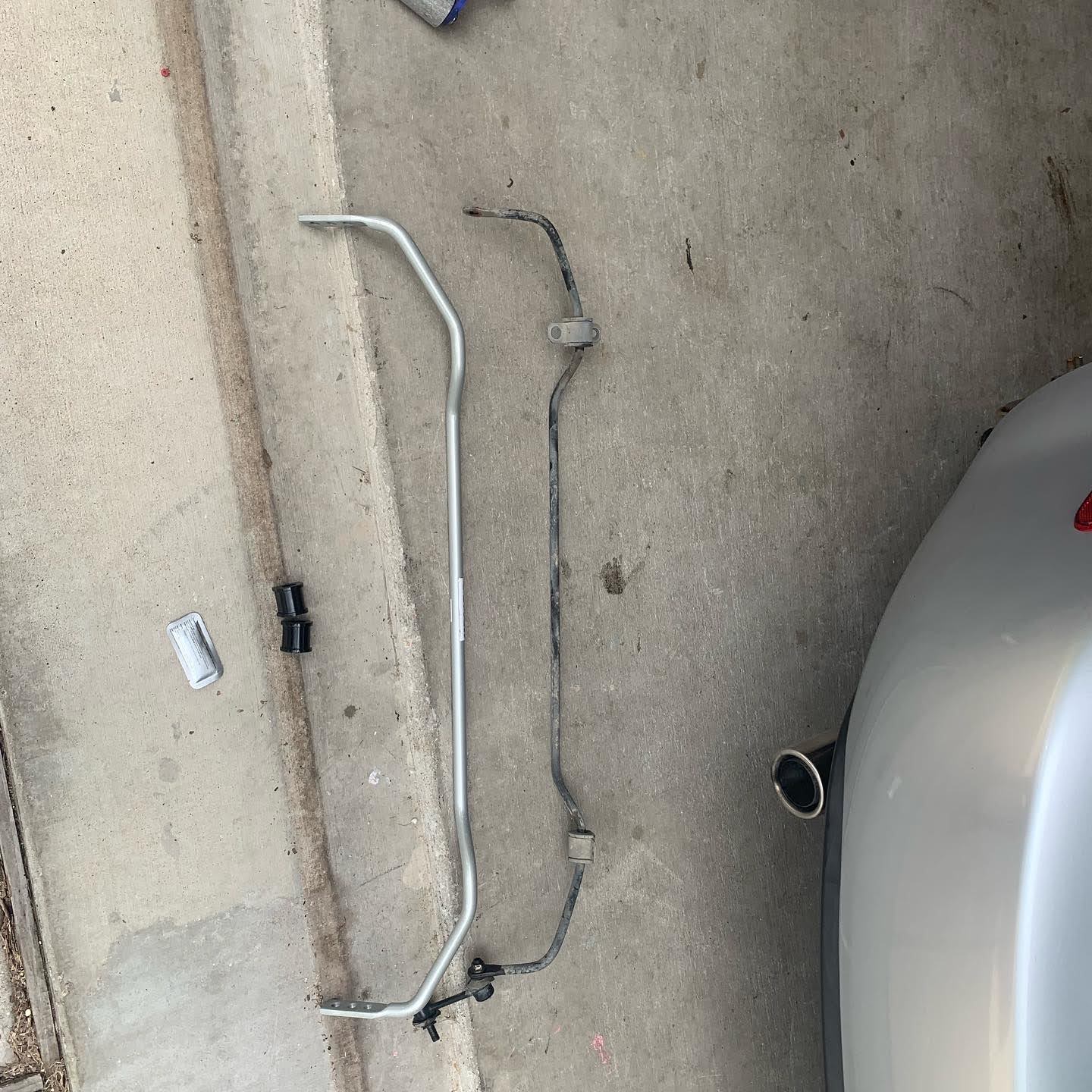
You can easily see the different in thickness between the new and old sway bar.
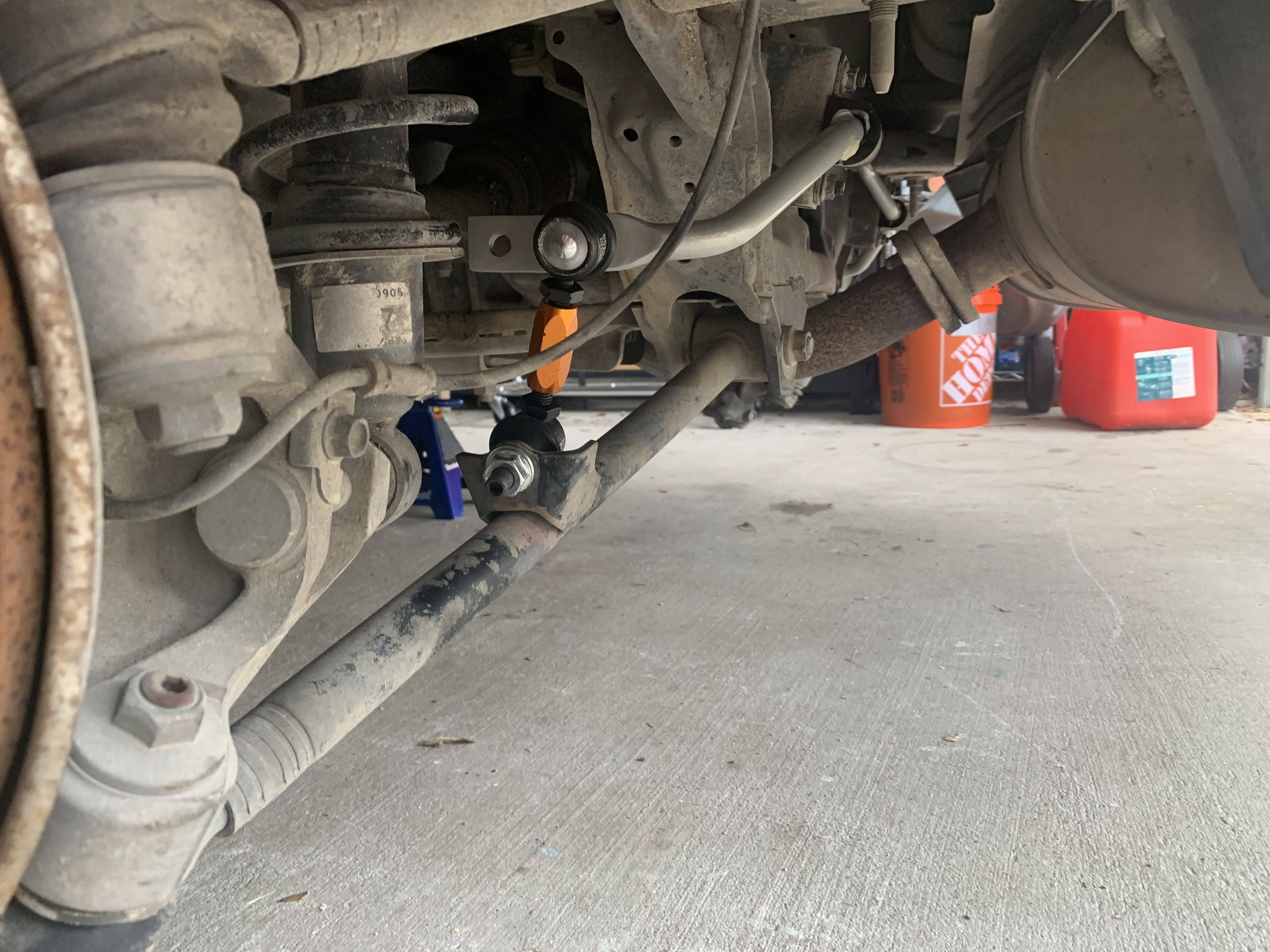
The rear sway bar installed.
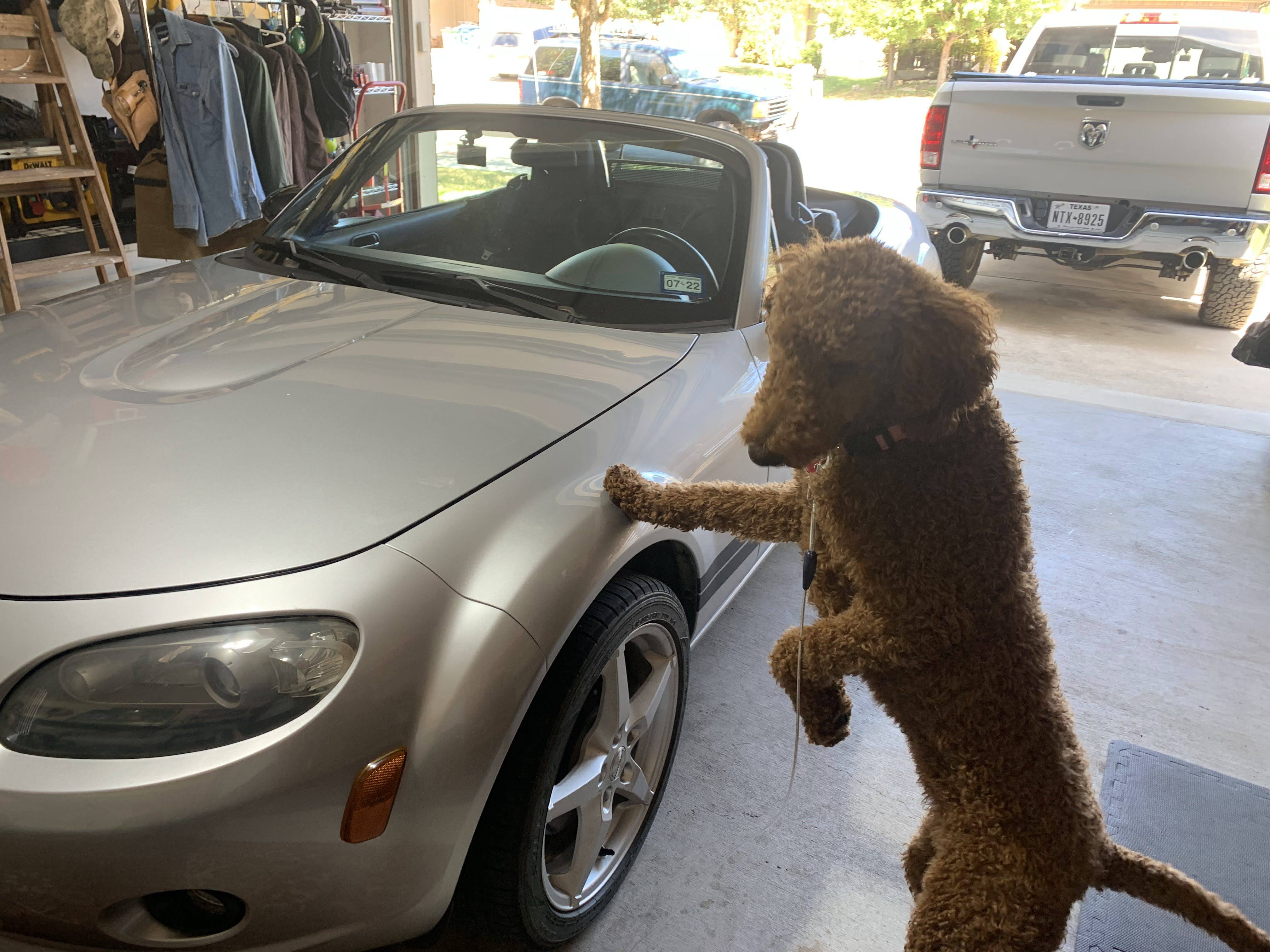
Riley double-checked the brake work.

You can also easily see the difference between the old roll protection and the new roll bar. I feel a lot safer with the new roll bar installed.
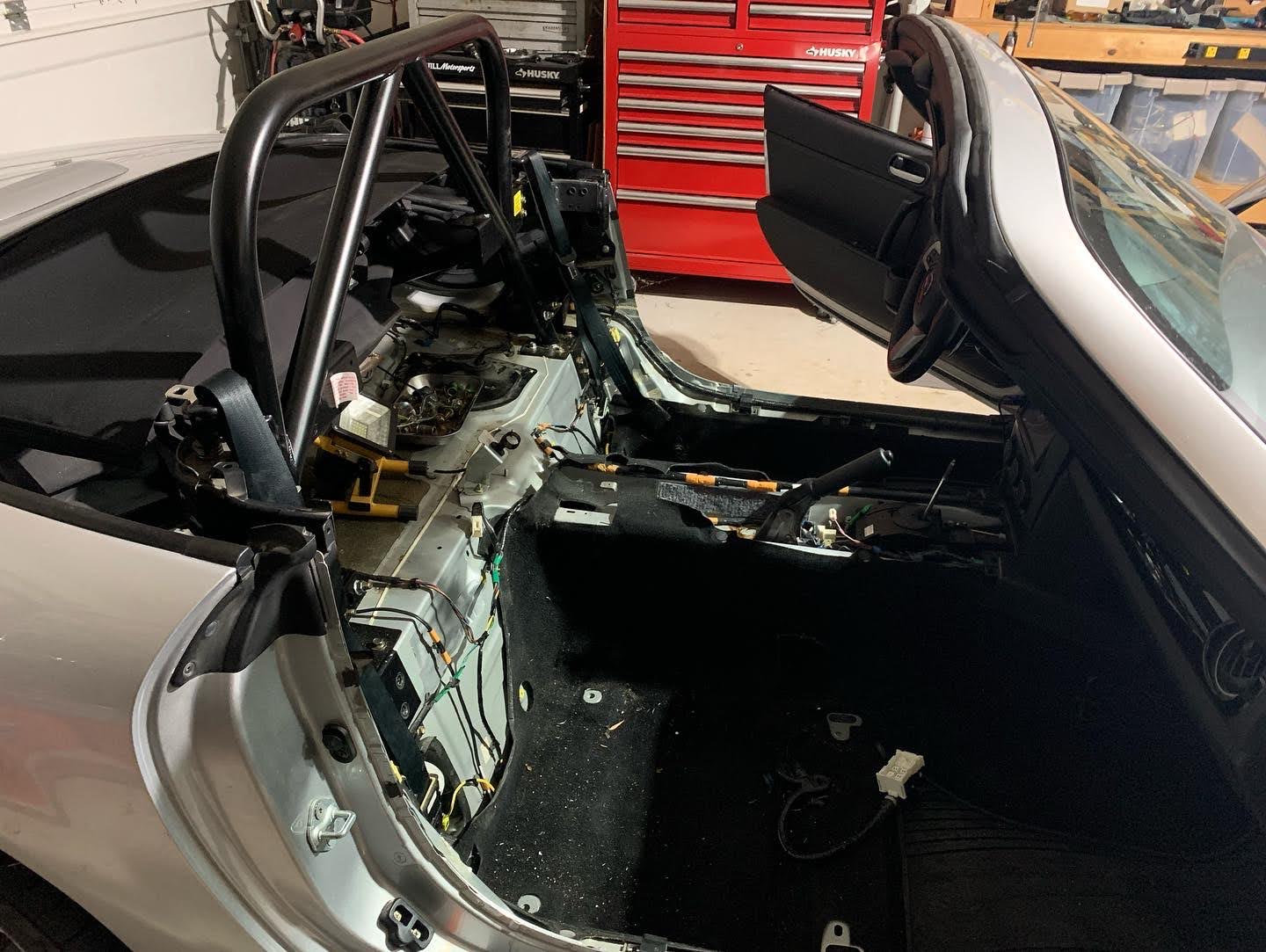
The new roll bar installed.
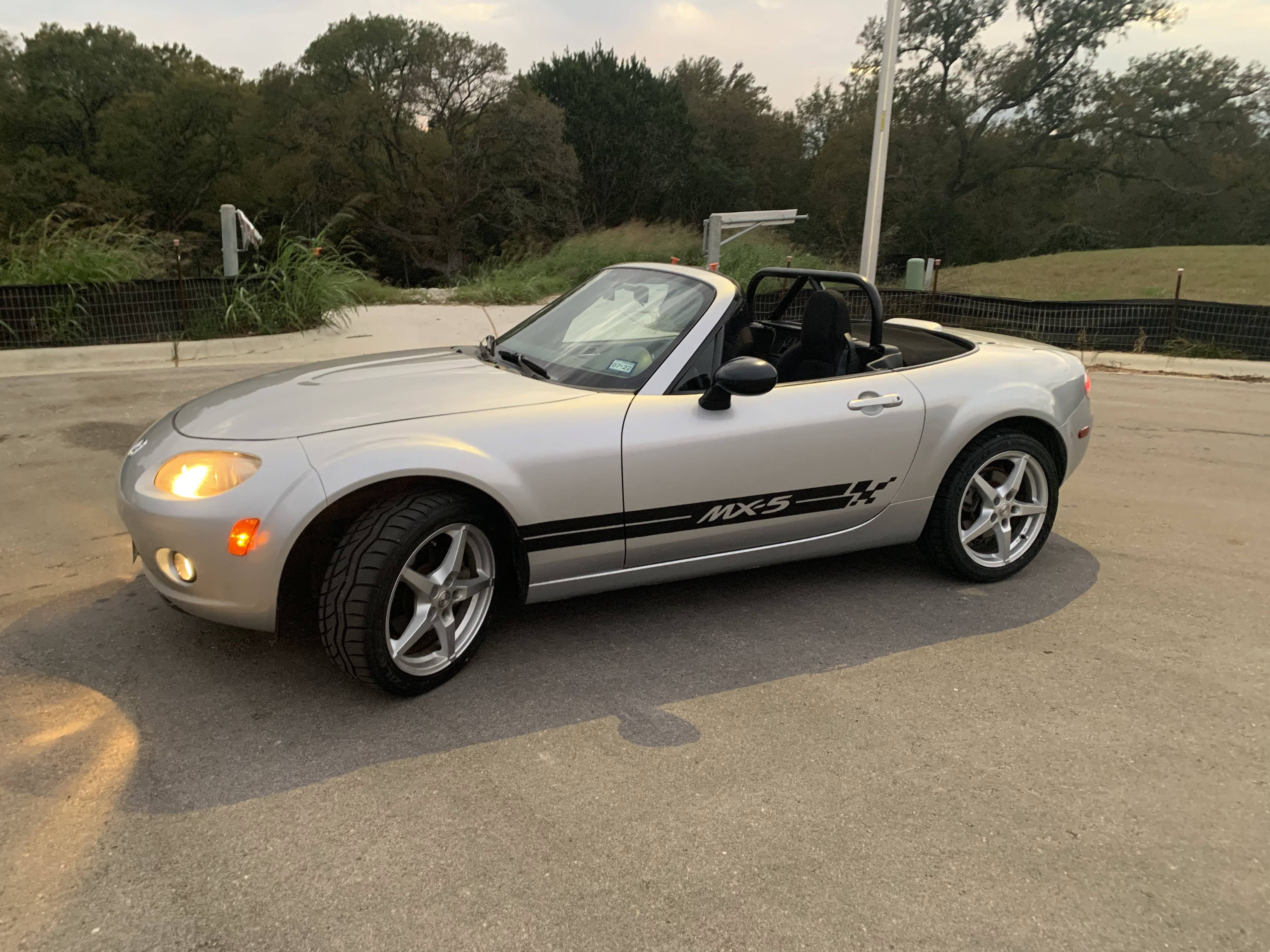
The finished product.
The Next Steps
This year I’ll be competing in a regional autocross championship and I’ve booked track time at Circuit of the Americas.
The Miata is slow on the straights, sure, but the racing happens in the turns. It’s quick through the corners, easy to drive, cheap to maintain, and a lot of fun.
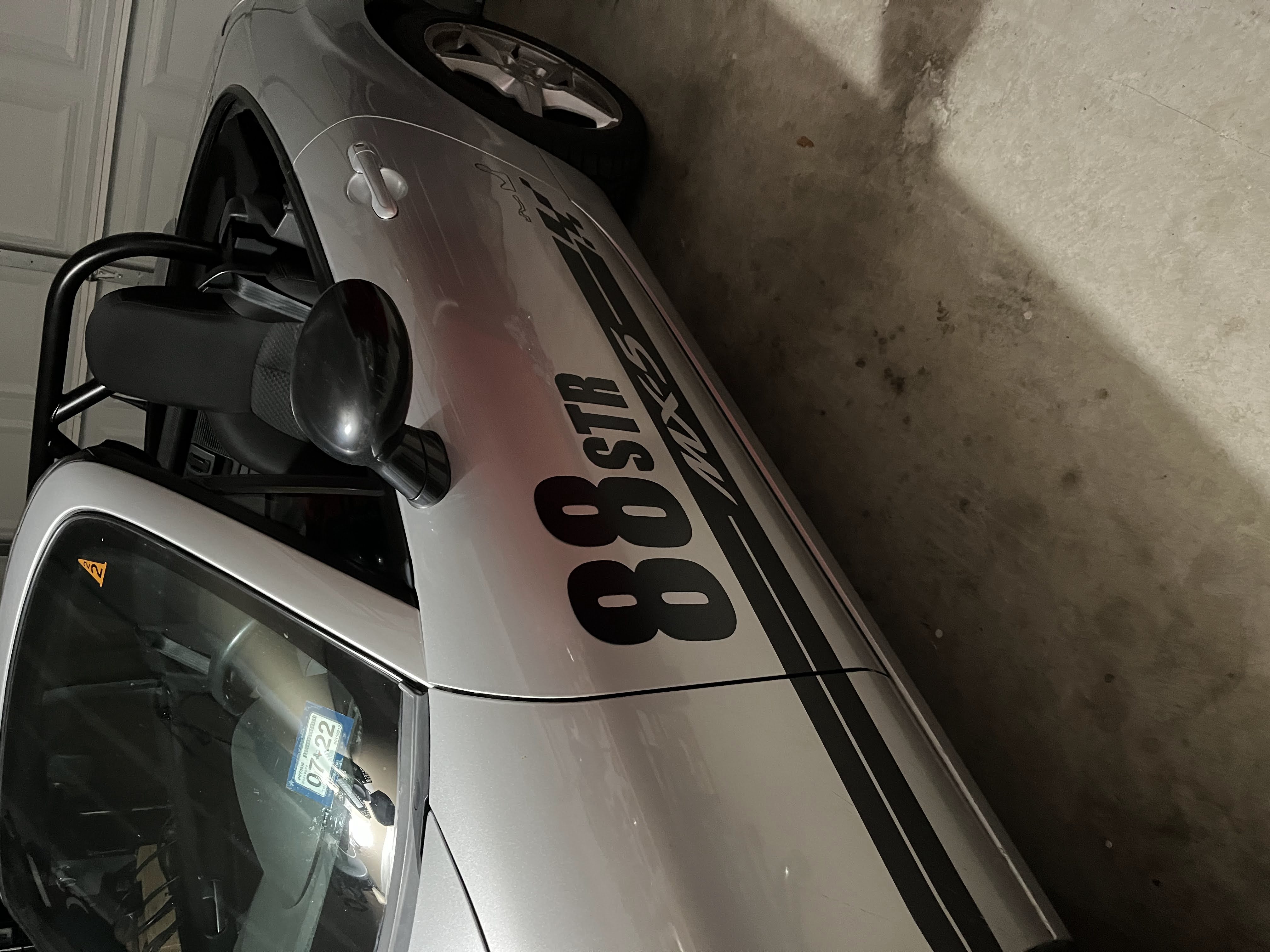
Number 88.